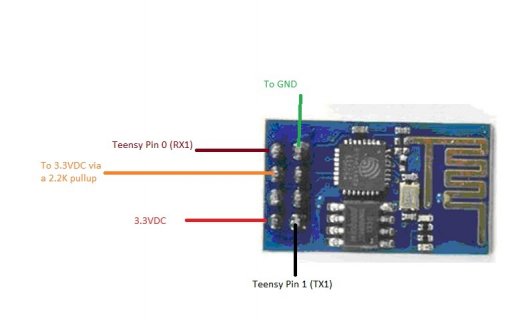jpatrick62
Well-known member
I just got 2 of the 8266 Wifi modules from ElectroDragon to test out. However, for whatever reason I have been unable to get the serial communications to
work. I have wired
and here's my hardware setup:

But I cannot get to the TTY commands. I've tried using 9600, 57600, and 115200 to no avail. I get nothing unless I
type in a char, and then I'll get endless chars back (the blue led on the 8266 stays on while this is happening as well).
Am I doing something wrong - I am using the Serial Port interface in the Arduino Tools menu.
work. I have wired
Code:
#define*UART1*Serial1
void setup()
{
****// Setup computer to Arduino serial
****Serial.begin(9600);
****// Setup Arduino to ESP8266 serial
****// Use baud rate 115200 during firmware update
****UART1.begin(9600);
}
void loop()
{
****// Send bytes from ESP8266 to computer
****if ( UART1.available() )
****{
********Serial.write( UART1.read() );
****}
****// Send bytes from computer back to ESP8266
****if ( Serial.available() )
****{
********UART1.write( UART1.read() );
****}
}and here's my hardware setup:

But I cannot get to the TTY commands. I've tried using 9600, 57600, and 115200 to no avail. I get nothing unless I
type in a char, and then I'll get endless chars back (the blue led on the 8266 stays on while this is happening as well).
Am I doing something wrong - I am using the Serial Port interface in the Arduino Tools menu.

